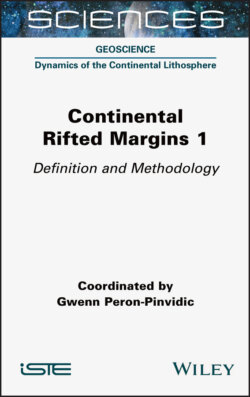Читать книгу Continental Rifted Margins 1 - Gwenn Peron-Pinvidic - Страница 23
Intracratonic rifts
ОглавлениеCratons are regions of the Earth where the continental lithosphere is much thicker than the average thickness of 35–40 km and are considered to be tectonically stable. The lithospheric mantle roots of cratons have unusually high thicknesses, reaching 200–400 km – more than double the standard values observed at the non-cratonic continental lithosphere (Artemieva Mooney 2002). Cratons are usually divided into two categories: the shields, where crystalline basement rocks outcrop and platforms, where the basement is overlaid by younger sediments. An intracratonic rift is thus a rift that develops on a specific lithospheric context away from active tectonic boundaries (Figure 1.10).
The driving forces creating intracratonic rifts remain extremely poorly understood. Their characteristics are not explained by standard rift models, as the extensive basement faulting and graben and/or half-graben basins appear to be absent (Klein and Hsui 1987; Hartley and Allen 1994). Uniform stretching models could explain the basic configuration of intracratonic basins, but these models fail at explaining the subsidence characteristics. The subsidence is extremely slow, and subsidence curves typically lack the characteristic two-step structure usually observed for rifted margins with the distinction between the first phase of tectonic-related subsidence (the effect of the faulting events) and the thermal subsidence (see Chapter 2). Various hypotheses have been posited to explain these peculiar subsidence curves of intracratonic basins. The main theories include subsidence caused by density changes within the lower crust and lithospheric mantle due to mineral phase changes (Gac et al. 2012), thermal relaxation and subsidence due to (negative) dynamic topography (Heine et al. 2008), thermal relaxation of a thick lithosphere undergoing low strain rates (Armitage and Allen 2010), tectonic reactivation (Braun and Shaw 2001) and uplift followed by subaerial erosion (Burov and Cloetingh 1997). Cacace and Scheck-Wenderoth (2016) reviewed all these hypotheses and determined that the long life span and slow subsidence of intracratonic basins are the result of feedback effects between sedimentation and thermal re-equilibrium at deeper crustal and mantle depths.
The basins of intracratonic rifts are often described as bowl-shaped depressions hundreds of kilometers across. The sedimentary successions correspond to terrestrial and shallow-water sediments (carbonates, shales, sandstones), typically exhibiting a layer cake infill architecture, supposedly thicker and more complete than in adjacent areas of the craton but still relatively thin. The accumulation rates are extremely slow (2–20 m/Ma), and sedimentation usually keeps pace with basin subsidence throughout the rift history. A key characteristic of intracratonic basins is that they preserve their stratigraphy over very long time periods.
Other than the Congo Basin, other examples of intracratonic basins include the Michigan basin, the East Barents Sea and the Chad basin.
Figure 1.10. Illustration of the intracratonic rift basin case
